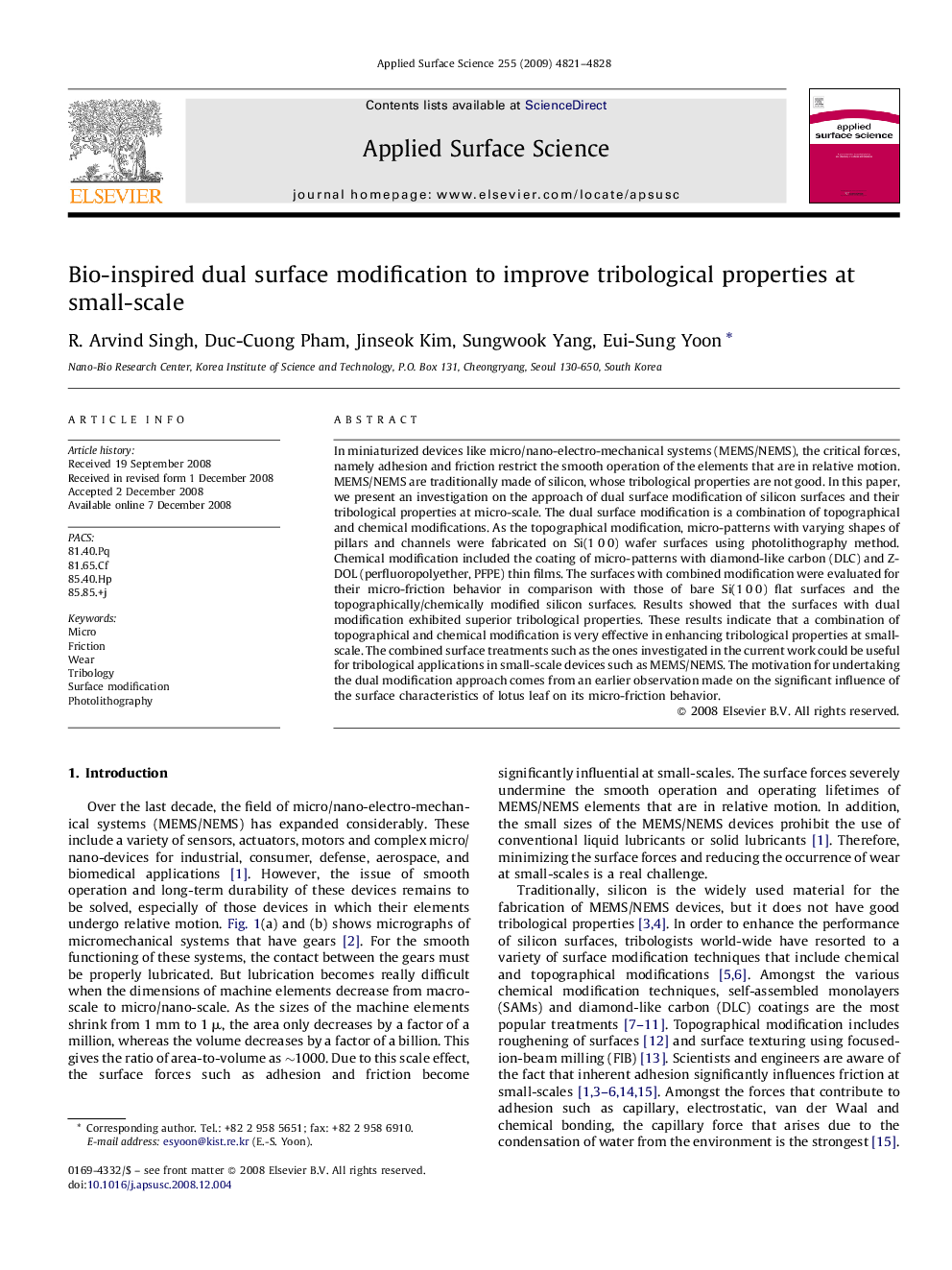| Article ID | Journal | Published Year | Pages | File Type |
|---|---|---|---|---|
| 5362799 | Applied Surface Science | 2009 | 8 Pages |
In miniaturized devices like micro/nano-electro-mechanical systems (MEMS/NEMS), the critical forces, namely adhesion and friction restrict the smooth operation of the elements that are in relative motion. MEMS/NEMS are traditionally made of silicon, whose tribological properties are not good. In this paper, we present an investigation on the approach of dual surface modification of silicon surfaces and their tribological properties at micro-scale. The dual surface modification is a combination of topographical and chemical modifications. As the topographical modification, micro-patterns with varying shapes of pillars and channels were fabricated on Si(1Â 0Â 0) wafer surfaces using photolithography method. Chemical modification included the coating of micro-patterns with diamond-like carbon (DLC) and Z-DOL (perfluoropolyether, PFPE) thin films. The surfaces with combined modification were evaluated for their micro-friction behavior in comparison with those of bare Si(1Â 0Â 0) flat surfaces and the topographically/chemically modified silicon surfaces. Results showed that the surfaces with dual modification exhibited superior tribological properties. These results indicate that a combination of topographical and chemical modification is very effective in enhancing tribological properties at small-scale. The combined surface treatments such as the ones investigated in the current work could be useful for tribological applications in small-scale devices such as MEMS/NEMS. The motivation for undertaking the dual modification approach comes from an earlier observation made on the significant influence of the surface characteristics of lotus leaf on its micro-friction behavior.
